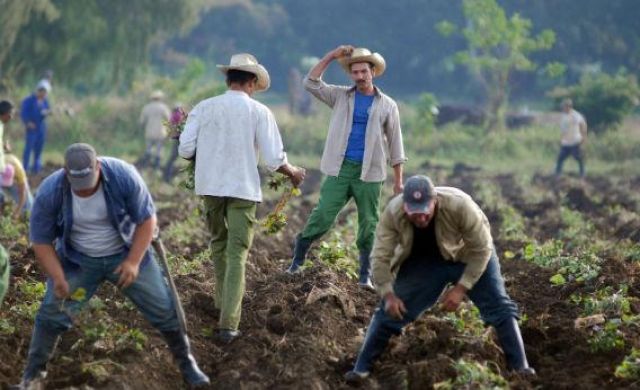
Cuba’s Council of Ministers approved “Life Task” (Tarea Vida) on April 25, a plan for confronting climate change.
It is the latest manifestation of Cuba’s sustained endeavour to contain the impact of climate change. The Cuban government has dedicated resources and talent to the project for many years. Policymakers have relied on facts, data, and ongoing research.
In 1992, Cuban President Fidel Castro was in Rio de Janeiro attending the United Nations Conference on Environment and Development – the “Rio Earth Summit”. Castro could well have stayed home in 1992; in the wake of the destruction of the Soviet Union, Cubans were enduring humanitarian and economic disasters. He was in Brazil because the Cuba he spoke for espouses solidarity with all people.
In remarks to the delegates, he gave voice to 19th century Cuban liberation fighter Jose Marti’s idea that “the homeland is humanity”. Castro warned of danger to humankind “due to the accelerated and progressive destruction of its natural living conditions.”
Afterwards, the government he led took steps on behalf of its own people. It created the Institute of Meteorology, the Institute of Hydraulic Resources, and networks of environmental agencies. It produced maps: a “Climate Atlas”, a national atlas, and soil and geological maps.
In 1993 it created The National Program for the Environment and Development. The Ministry of Science, Technology, and Environment (CITMA) took shape in 1994. In 1997, Law 81 defined the structure and functioning of centres specialising in environmental work.
Cuba’s Academy of Sciences initiated studies into climate change in 1991. The Institute of Meteorology issued two major reports in 1998 and in 2000. After Hurricanes Charley and Ivan in 2004, research efforts intensified.
Collective scientific work culminated in a summarising report released by the Institute of Meteorology in 2014. Titled Impacts of Climate Change and Measures for Adaptation in Cuba, it contained articles by dozens of authors from 26 Cuban research institutes.
The report surveys manifestations of climate change in Cuba, presenting likely climate scenarios “for 2050 and 2100.” It evaluates effects on various socio-economic sectors, identifies knowledge gaps and establishes priorities in protecting natural resources. It calls upon the government to develop new capacities and to apply remedial and protective measures in an integrated fashion.
Findings of the report were part of Cuba’s contribution to the “Second National Communication to the United Nations Framework Convention on Climate Change”. Myrta Kaulard, a United Nations representative, observed: “The team of Cuban experts was capable of achieving equilibrium between the scientific rigor imposed by an investigation of such magnitude and the necessity to explain the anticipated impacts in clear language.”
CITMA head Elba Rosa Perez explained that Life Task was the fruit of research, experimentation, agricultural innovations and previous experience with protecting natural systems. She identified three priorities: “preserving lives in the most vulnerable areas”, food security and tourism.
The plan calls for “strategic actions”, including: a ban on new home construction in vulnerable coastal areas; adaptation of infrastructure to coastal flooding and adaption of land use to drought and rising sea water; and new farming methods.
Specific projects include crop diversification; developing heat-resistant plant varieties; protecting urban infrastructure and dwellings; rebuilding urban sea fronts; relocating homes; restoring protective ecosystems such as beaches, coral reefs, and mangrove swamps; improving engineering and hydraulic infrastructure for coastal regions; enhancing water availability; and reforestation to protect soil and water sources.
Cuba’s preparations for meeting threats from climate change have been persistent and comprehensive; ample human and material resources have been made available.
Castro’s 1992 remarks foreshadowed the development of two opposed ways of dealing with climate change. Wealthy nations, he said, enjoyed “lifestyles and consumer habits that ruin the environment; … consumer societies are chiefly responsible for this appalling environmental destruction.”
Castro referred to the flow of wealth from poor to rich nations. He said of rich nations: “They have saturated the atmosphere with gases, altering climatic conditions with the catastrophic effects we are already beginning to suffer.”
“Make human life more rational,” Castro insisted. “Adopt a just international economic order. Use science to achieve sustainable development without pollution. Pay the ecological debt. Eradicate hunger and not humanity.”
In responding to climate change, in which capitalism is complicit, Cuba has the right tools available. Cuba elaborated a plan, and did so collectively. Planners looked at realities, subjecting them to scientific study.
And Cuba’s plans do not allow for private wealth accumulation or profiteering.
[Abridged from People’s World.]
Like the article? Subscribe to Green Left now! You can also like us on Facebook and follow us on Twitter.